The richly decorated, mesmerizing and slightly mind-bending Bayon (Prasat Bayon) Khmer temple was built, as a state temple (the last state temple to be built at Angkor), by the creative genius and inflated ego of the Mahayana Buddhist King Jayavarman VII (Cambodia’s most celebrated king) in the late 12th or early 13th century. Later Hindu and Theravada Buddhist kings, following Jayavarman’s death, modified and augmented the temple in accordance with their own religious preferences.
The multitude of serene, enigmatic and smiling stone faces on the many towers, the temple’s most distinctive feature, jut out from the upper terrace and cluster around its central peak. Two sets (totaling 1.2 kms.) of extraordinary bas-reliefs, incorporating more than 11,000 figures, present a combination of mythological, historical, and mundane scenes.
Though the only Angkorian state temple to be built primarily as a Mahayana Buddhist shrine dedicated to the Buddha, a great number of minor and local deities were also encompassed as representatives of the various districts and cities of the realm. The Bayon was the centerpiece of Jayavarman VII‘s massive program of monumental construction and public works (which was also responsible for the walls and nāga-bridges of Angkor Thom and the temples of Preah Khan, Ta Prohm and Banteay Kdei).
Check out “Ta Prohm Temple” and “Banteay Kdei”
The 216 gargantuan faces decorating the temple’s towers are similar to other statues of Jayavarman VII, leading many scholars to conclude that the faces are representations of the king himself, the 54 (some say that the Khmer empire was divided into 54 provinces at the time of Bayon’s construction) pairs of his all-seeing eyes making him hold sway over such a vast empire and ensuring the disparate and far-flung subjects yielded to his magnanimous will. Others have said that the faces belong to Avalokitesvara or Lokesvara, the bodhisattva of compassion.
Since the time of Jayavarman VII, subsequent monarchs have made numerous additions and alterations at the Bayon. In the mid-13th century, during the reign of Jayavarman VIII , the Khmer empire reverted to Hinduism and this state temple was altered accordingly. Theravada Buddhism became the dominant religion in later centuries, leading to still further changes. Eventually, the temple was abandoned to the jungle. Current features that were not part of the original plan include the libraries, parts of the upper terrace, the terrace to the east of the temple and the square corners of the inner gallery.
In the first part of the 20th century, the École Française d’Extrême Orient (EFEO) restored the temple in accordance with the technique of anastylosis. Since 1995, the Japanese Government team for the Safeguarding of Angkor (the JSA) has been the temple’s main conservatory body, holding symposia annually.
Bayon’s original name was Jayagiri (or “Victory Mountain”) but, after the French occupation, it was later named Banyan Temple due to its religious significance and Buddhist imagery (the Buddha is said to have attained enlightenment under the Banyan tree). During the renovation of the Banyan Temple, the local Khmer workers mispronounced Banyan as Bayon and the name stuck.
Oriented towards the east, the temple’s buildings are set back to the west, inside enclosures elongated along the east-west axis. The temple sits at the exact center (it took researchers some time to realize this as it was shrouded in jungle) of Angkor Thom, Jayavarman’s capital, and roads lead directly to it from the gates at each of the city’s cardinal points. The temple has no wall or moats, these being replaced by those of the city itself. The city-temple arrangement has an area of 9 sq. kms., much larger than that of Angkor Wat to the south (2 km²).
Check out “Angkor Wat“
Bayon’s basic structure comprises a simple three levels corresponding, more or less, to three distinct phases of building because Jayavarman VII began construction of this temple at an advanced age. Never confident it would be completed, each time one phase was completed, he moved on to the next. The first two, square levels are and adorned with bas-reliefs while the third, circular level houses the towers and their faces.
Within the temple are two galleried enclosures (the third and second enclosures) and an upper terrace (the first enclosure), all crowded against each other, with little space between.
The outer gallery’s outer wall features a series of famous, highly detailed and informative bas-reliefs, on the outer wall of the first level not accompanied by any sort of epigraphic text, that depict historical events and vivid scenes from the Angkorian Khmer’s everyday life in 12th-century Cambodia.
The second level bas-reliefs do not have the epic proportions of those on the first level and tend to be fragmented. There is considerable uncertainty as to which historical events are portrayed and how by the bas-reliefs and, if at all, the different reliefs are related. From the east gopura , the subjects are (in clockwise order assuming you enter the Bayon from the east):
- Chams on the Run – a three-level panorama. On the first tier, a Khmerarmy (including some Chinese soldiers) marching off to battle, with musicians, horsemen, and officers mounted on elephants, followed by oxcarts of provisions (southern part of the eastern gallery). The second tier depicts coffins being carried back from the battlefield. The third tier depicts Jayavarman VII on horseback in the center, shaded by parasols, followed by legions of concubines (to the left).
- A procession, followed by domestic scenes depicting Angkorian houses, some of the occupants of which appear to be Chinese merchants (eastern gallery, on the other side of the doorway leading into the courtyard).
- Hindus praying to a linga(phallic symbol) – an unfinished temple scene with towers, apsaras, and a lingam. This image was probably originally a Buddha, later modified by a Hindu king. (first panel north of the southeast corner pavilion)
- The Naval Battlepanel (eastern part of the southern gallery), with some of the best-carved reliefs, depicts a naval battle on the Tonle Sap between Khmer and Cham (with head coverings) forces, underneath which are more scenes of everyday civilian life around the Tonlé Sap lake depicting a market, open-air cooking, people picking lice from each other’s hair, hunters, and women tending to children, an invalid and, towards the western end of the panel, a woman giving birth.
- Chams Vanquished (southern gallery, past the doorway leading to the courtyard) – scene from daily life with boats and fisherman (including a Chinese junk), below which is a depiction of a cockfight; then some palace scenes with princesses, servants, people engaged in conversations and games (including two people playing chess), women selling fish in the market, wrestlers, and a wild boar fight; then a battle scene with Cham warriors disembarking from boats along the shore of Tonlé Sap lake and engaging Khmer warriors whose bodies are protected by coiled ropes, followed by a scene in which the Khmer dominate the combat and soundly thrashed the Chams, followed by a scene of meals being prepared and served in which the Khmer king celebrates a victory feast with his subjects.
- The most western relief of the south gallery, depicting a military procession, is unfinished, as is the panel showing elephants being led down from the mountains. Brahmans have been chased up two trees by tigers.
- A military procession including both Khmers and Chams, elephants, war machines such as a large crossbow and a catapult (western part of the southern gallery).
- Unfinished reliefs showing an army marching through the forest, then arguments and fighting between groups of Khmers (southern part of the western gallery).
- All-Seeing King (western gallery, past the doorway to the courtyard, just north of the civil war panel) – a scene depicting continued fighting, on a smaller scale, between Khmer warriors, then a scene in which warriors pursue others past a pool in which a gargantuan fish swallows a small antelope (among the smaller fish is a prawn, under which an inscription proclaims that the king will seek out those in hiding),then a royal procession, with the king standing on an elephant, preceded by the ark of the sacred flame.
- Khmer circus (western part of the northern gallery) – scene of royal entertainment including athletes, jugglers, acrobats. Here, you can see a strongman holds three dwarfs, a man on his back is spinning a wheel with his feet above which is a group of tightrope walkers, ascetics sitting in a forest, and more battles between Khmer and Cham forces. To the right of the circus, the royal court watches from a terrace, below which is a procession of animals. Some of the reliefs in this section remain unfinished.
- The Sacking of Angkor(northern gallery, past the doorway to the courtyard) – scene during the war of 1177 when the Khmers were defeated by the Chams, fleeing from Cham soldiers advancing in tight ranks, and Angkor was pillaged. The wounded Khmer king is being lowered from the back of an elephant while a wounded Khmer general is being carried on a hammock suspended from a pole. Directly above is a scene where despairing Khmers are getting drunk. The Chams (on the right) are in hot pursuit of the vanquished Khmers.
- Another marching Khmer army (northeast corner pavilion).
- The Chams Enter Angkor (eastern gallery)depicts a land battle between the Khmer and Cham armies, both of which are supported by elephants. Notice the flag bearers among the Cham troops (on the right). The Chams were defeated in the war, which ended in 1181, as depicted on the first panel in the sequence.
A courtyard, enclosed by the outer gallery, has two libraries, one on either side of the east entrance. Originally, the courtyard contained 16 chapels, all subsequently demolished by the Hindu restorationist Jayavarman VIII.
The inner gallery, raised above ground level, has doubled corners, with the original redented cross-shape later filled out to a square. Its bas-reliefs, later additions of Jayavarman VIII, are in stark contrast to those of the outer gallery.
Rather than set-piece battles and processions, the inner gallery’s smaller canvases are decorated, for the most part, with scenes from Hindu mythology and some of the figures depicted are Siva, Vishnu, and Brahma, the members of the trimurti or threefold godhead of Hinduism, Apsaras or celestial dancers, Ravana and Garuda.
However, there is no certainty as to what some of the panels depict or their relationship with one another. For example, one gallery, just north of the eastern gopura, shows two linked scenes which have been explained as either the freeing of a goddess from inside a mountain or an act of iconoclasm by Cham invaders.
Another series of panels, connected with the legend of the Leper King (who contracted leprosy from the venom of a serpent with whom he had done battle), shows a king fighting a gigantic serpent with his bare hands, then having his hands examined by women and, finally, lying ill in bed.
Depictions of the construction of a Vishnuite temple (south of the western gopura) and the Churning of the Sea of Milk (north of the western gopura) are less obscure. The inner gallery, raised one level higher again, is nearly filled by the upper terrace.
Scholars were led to conclude, due to the lack of space between the inner gallery and the upper terrace, that the upper terrace did not figure in the original plan for the temple but that it was, following a change in design, added shortly thereafter. Originally, it is believed that the temple had been designed as a single-level structure similar, in that respect, to the roughly contemporaneous foundations at Ta Prohm and Banteay Kdei.
The famous “face towers” of the Bayon, at the upper terrace, each supports two, three or four (most common) gigantic smiling faces. In addition to the mass of the central tower, smaller towers are located at the corners and entrances along the inner gallery and on chapels on the upper terrace. At one point, the temple hosted 49 towers (now only 37 remain). The number of faces numbered approximately 200 but there can be no definitive count since some are only partially preserved.
Like the inner gallery, the central tower, rising 43 m. above the ground, was originally cruciform but, later, was filled out and made circular. At the time of the temple’s foundation, the principal religious image was a 3.6 m. tall statue of the Buddha (depicted seated in meditation, shielded from the elements by the flared hood of the serpent king Mucalinda) located in the sanctuary at the heart of the central tower.
The Buddha was removed from the sanctuary and smashed to pieces during the reign of Jayavarman VIII (Hindu restorationist monarch). In 1933, after being recovered from the bottom of a well, it was pieced back together and is now on display in a small pavilion at Angkor.
Most people to visit in the morning due to the temple’s eastward orientation but even around late afternoon, the time of our visit, Bayon looked equally good. From a religious standpoint, the temple is a definitive political statement about the change from Hinduism to Mahayana Buddhism.
As we walked around this “face temple,” a dozen or more of the huge, iconic heads, with a hint of humanity, are visible at any one time, full face or in profile, sometimes level with our eyes but mostly staring or glaring down from on high and from every angle, exuding power and control.
Unlike Angkor Wat which looks impressive from all angles and impresses with the grand scale of its architecture and open spaces, Bayon “gives the impression of being compressed within a frame which is too tight for it,” looking rather, from a distance, like a glorified pile of rubble. However, when we entered the temple and made our way up to the third level, its magic became apparent.
Bayon (Prasat Bayon): Angkor Thom, Angkor Archeological Park, Krong Siem Reap, 17000, Cambodia

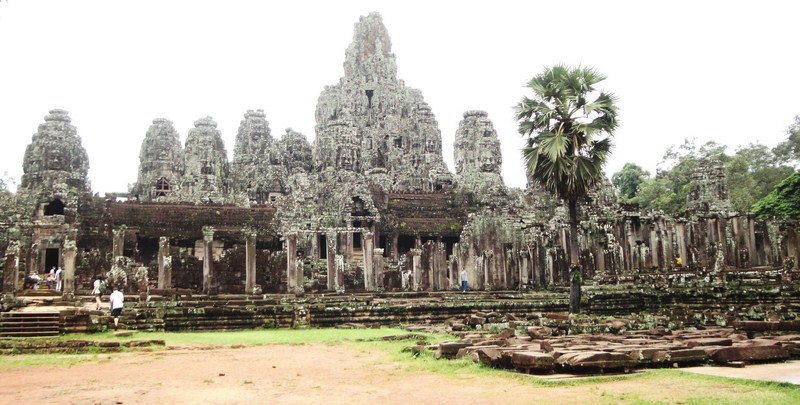
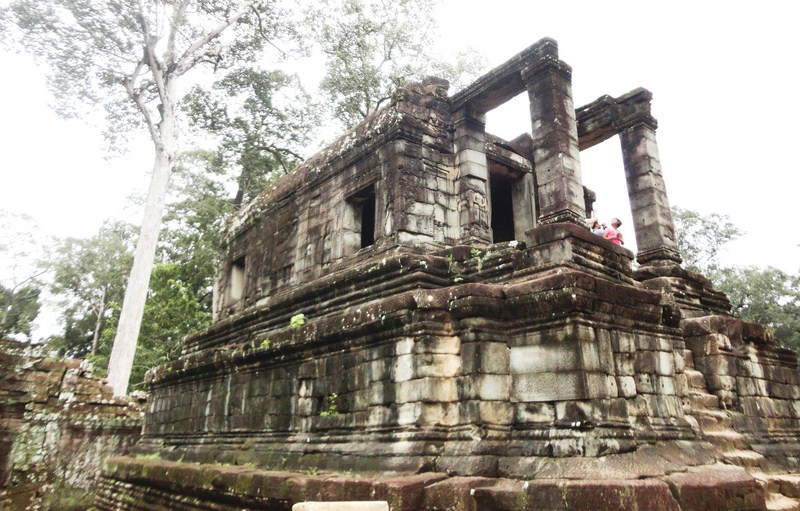
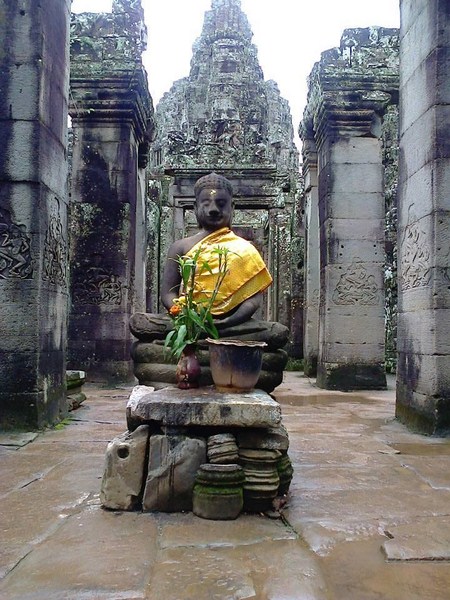
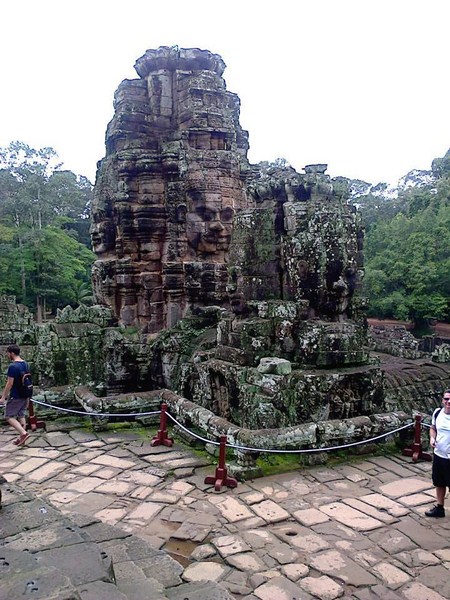
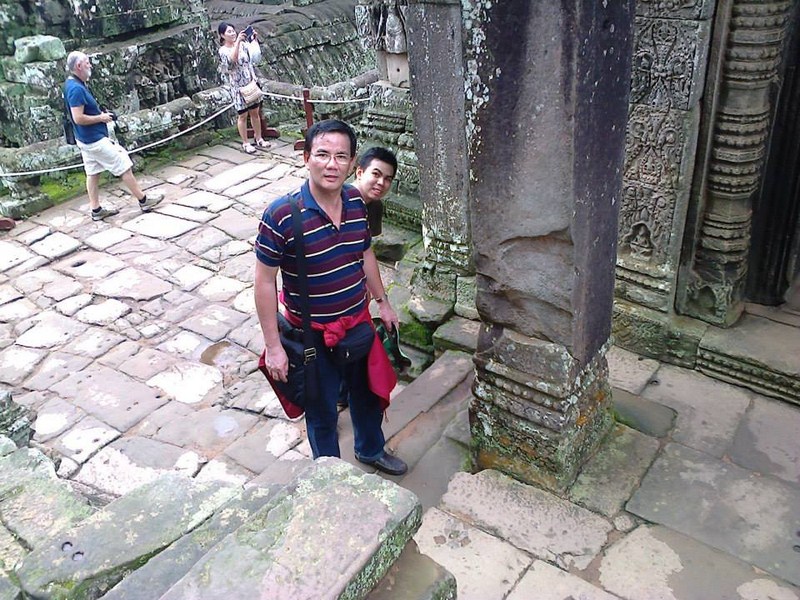
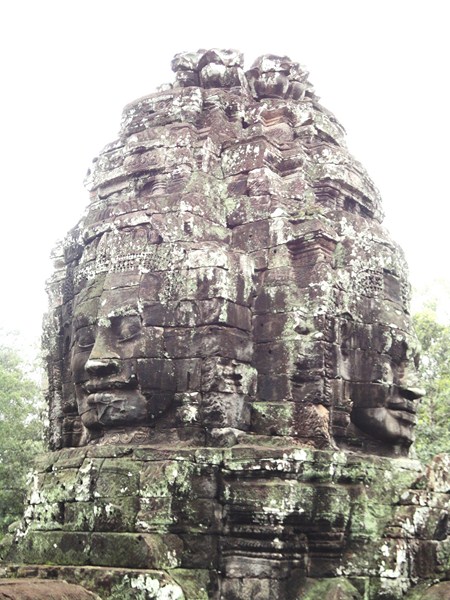

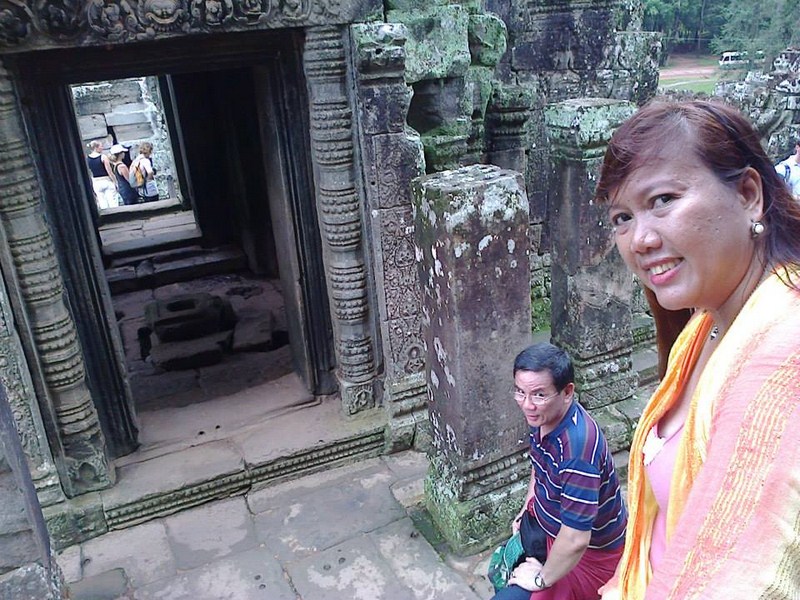



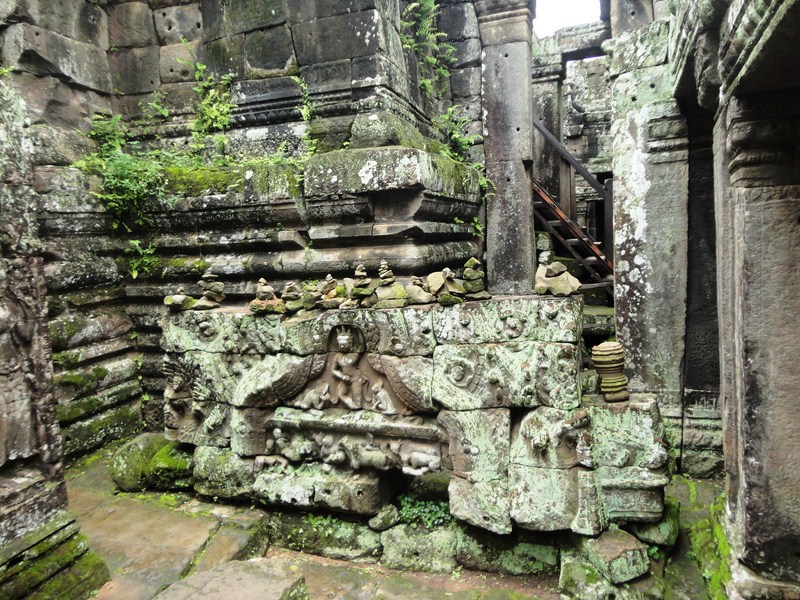

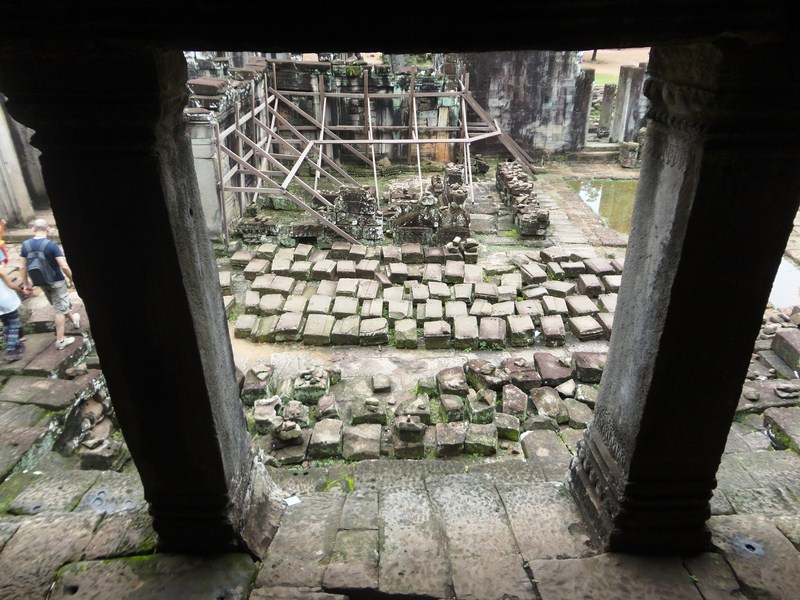
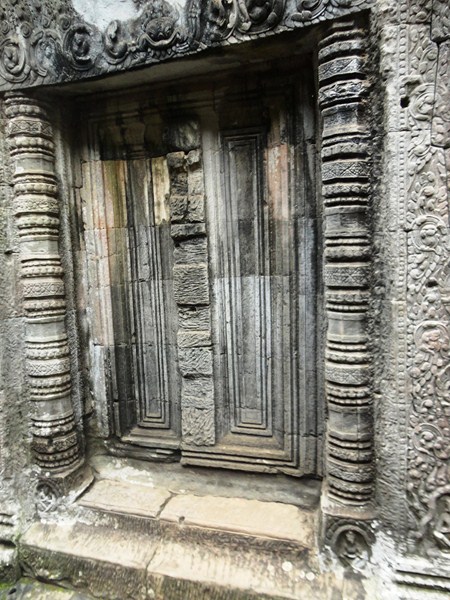
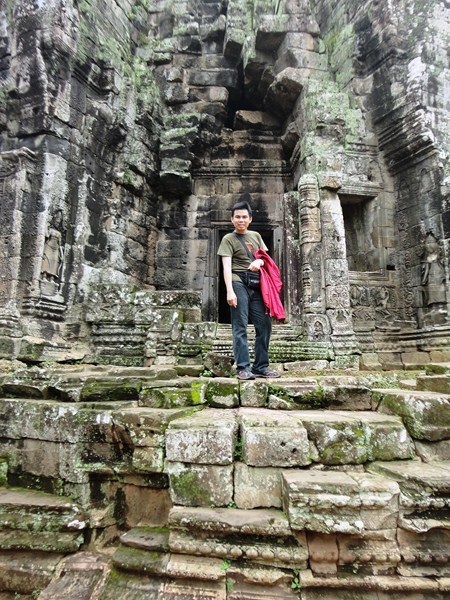
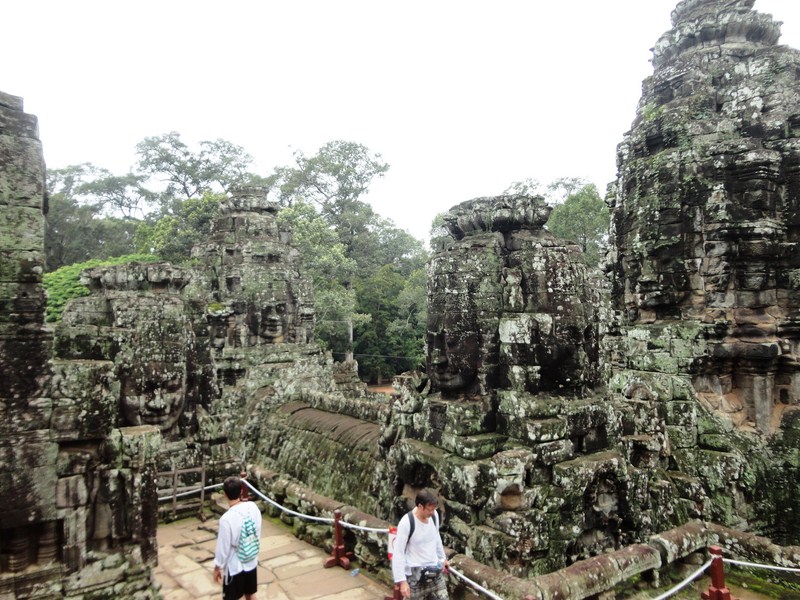
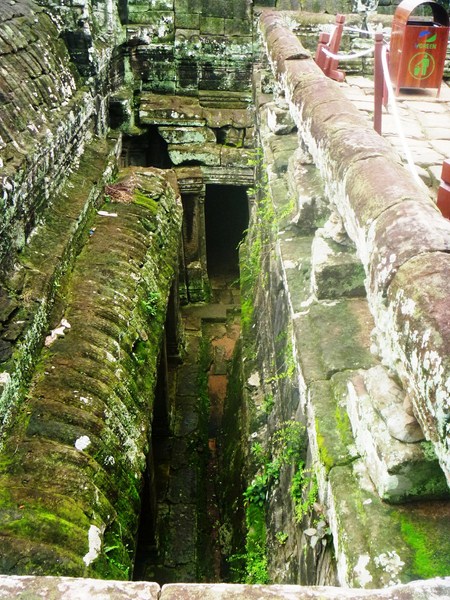


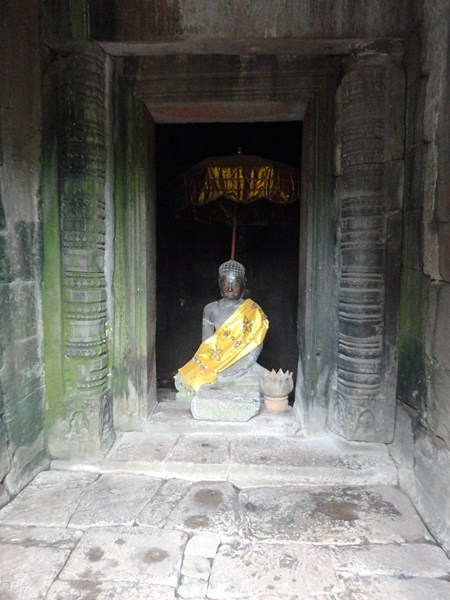
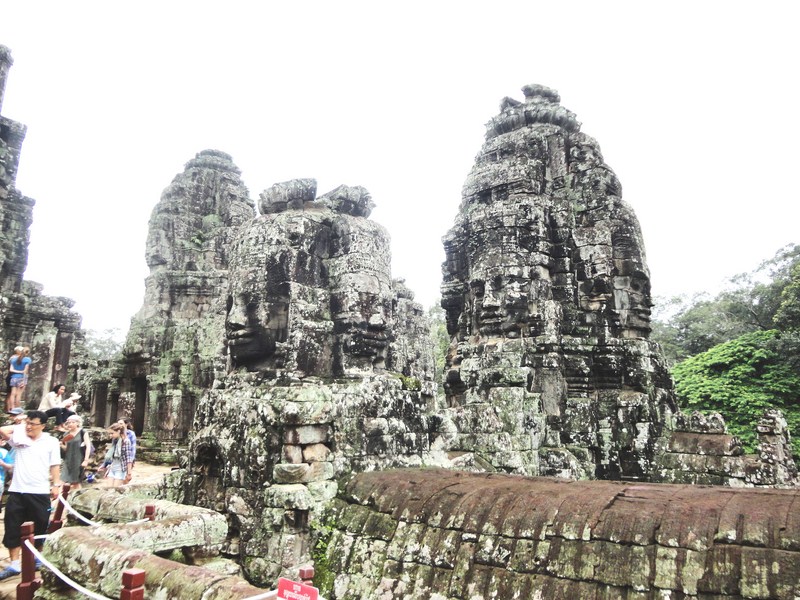

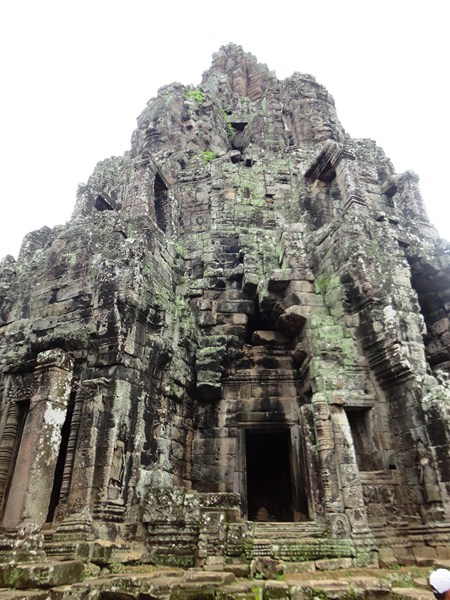
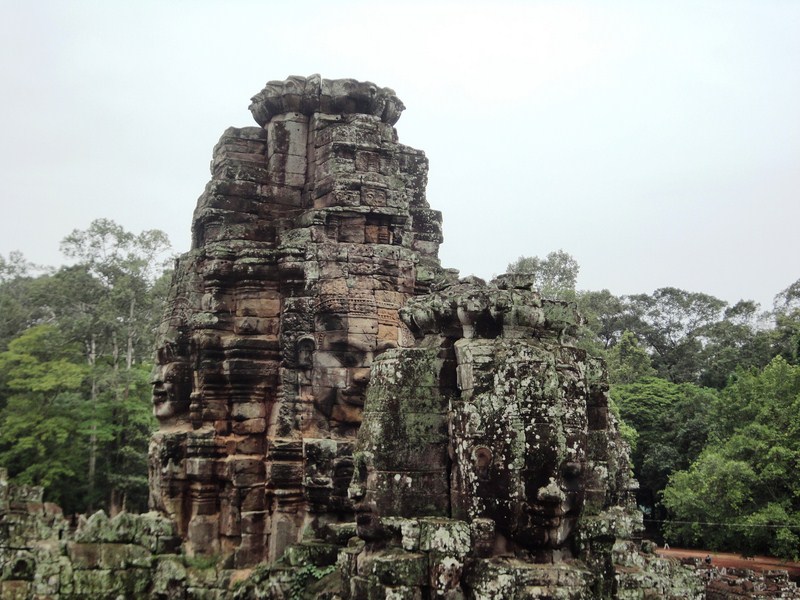
Pingback: Angkor Wat (Siem Reap, Cambodia) – B.L.A.S.T. – Live Life to the Fullest ……… Don't Stay Put
Pingback: Bantay Kdei (Siem Reap, Cambodia) – B.L.A.S.T. – Live Life to the Fullest ……… Don't Stay Put
Pingback: Baphuon Temple (Siem Reap, Cambodia) – B.L.A.S.T. – Live Life to the Fullest ……… Don't Stay Put
Pingback: Preah Pithu (Siem Reap, Cambodia) – B.L.A.S.T. – Live Life to the Fullest ……… Don't Stay Put
Pingback: Terrace of the Elephants (Siem Reap, Cambodia) – B.L.A.S.T. – Live Life to the Fullest ……… Don't Stay Put
Pingback: Ta Prohm Temple (Siem Reap, Cambodia) – B.L.A.S.T. – Live Life to the Fullest ……… Don't Stay Put
Pingback: Angkor Archaeological Park (Siem Reap, Cambodia) – B.L.A.S.T. – Live Life to the Fullest ……… Don't Stay Put